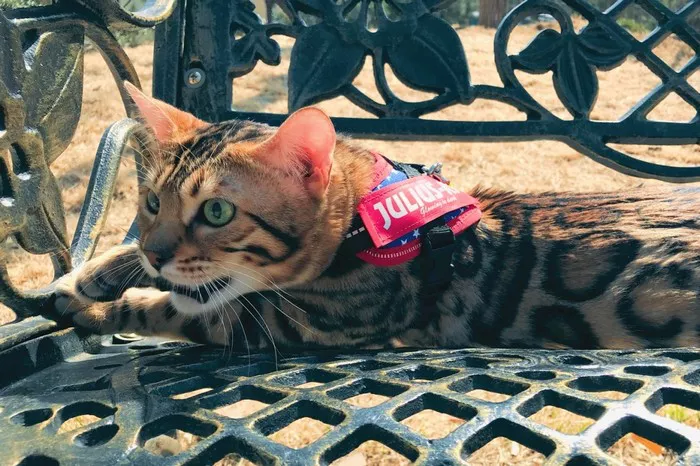Himalayan cats, with their striking blue eyes, luxurious coats, and regal demeanor, have captured the hearts of cat lovers worldwide. Bred from a combination of Persian and Siamese ancestry, these majestic felines possess a unique blend of traits that make them both beautiful and beloved companions. However, like all purebred cats, Himalayans are prone to certain health issues that owners should be aware of to ensure their pets live long, healthy lives. In this article, we delve into the common health problems that Himalayan cats may encounter, offering insights into prevention, early detection, and responsible breeding practices.
Brachycephalic Syndrome: Unraveling the Challenges of Flat Faces
One of the most well-known health issues affecting Himalayan cats is brachycephalic syndrome, a condition caused by their distinctive flat facial structure. This syndrome can lead to a range of respiratory problems, including snoring, wheezing, and difficulty breathing, especially in hot or humid conditions. Additionally, Himalayans are prone to eye problems such as excessive tearing, corneal ulcers, and entropion (inward rolling of the eyelids), as well as dental issues due to overcrowded or misaligned teeth. Owners should monitor their Himalayans closely for signs of respiratory distress or eye discomfort and seek veterinary care if symptoms arise.
Polycystic Kidney Disease (PKD): Confronting a Genetic Predicament
Polycystic kidney disease (PKD) is a hereditary condition that affects Himalayan cats, causing fluid-filled cysts to develop in the kidneys over time. While not all Himalayans will inherit PKD, those with affected parents are at higher risk, making genetic testing an essential tool for responsible breeders. Early detection of PKD through ultrasound screening can help owners and breeders make informed decisions about breeding and management strategies. While there is no cure for PKD, supportive care, including specialized diets, fluid therapy, and regular monitoring, can help manage symptoms and improve quality of life for affected cats.
Other Common Health Problems: Navigating the Terrain
In addition to brachycephalic syndrome and PKD, Himalayan cats may be prone to a variety of other health issues. Cherry eye, a condition in which the third eyelid protrudes from the corner of the eye, can occur in Himalayans and may require surgical correction. Ringworm, a fungal infection of the skin and hair, can also affect Himalayans, particularly those with dense coats, and requires prompt treatment to prevent spreading to other pets or humans. Additionally, Himalayans may be more sensitive to heat due to their thick fur and flat faces, making it essential for owners to provide cool, well-ventilated environments and monitor for signs of heatstroke during hot weather.
Preventative Care: Building a Foundation for Health
To promote the health and well-being of Himalayan cats, owners should prioritize preventative care measures tailored to their specific needs. Regular grooming, including daily brushing to prevent matting and monthly baths to keep their coats clean, can help reduce the risk of skin and coat issues. Providing a balanced diet formulated for the unique nutritional requirements of Himalayans, along with opportunities for exercise and mental stimulation, is crucial for maintaining optimal health and preventing obesity-related problems. Additionally, scheduling routine veterinary checkups, vaccinations, and parasite prevention treatments can help identify and address potential health issues early, ensuring that Himalayan cats thrive throughout their lives.
Early Detection and Treatment: The Key to Wellness
Vigilance and proactive management are essential for detecting and addressing health problems in Himalayan cats as early as possible. Owners should familiarize themselves with common signs of illness, such as changes in appetite, behavior, or litter box habits, and seek veterinary attention promptly if any abnormalities are observed. Early intervention and treatment can often prevent minor issues from escalating into more serious conditions, improving outcomes and quality of life for Himalayan cats.
Responsible Breeding: Paving the Path to Health
For those considering bringing a Himalayan cat into their home, choosing a reputable breeder is paramount. Responsible breeders prioritize health testing and ethical breeding practices to minimize the risk of hereditary health issues like PKD and brachycephalic syndrome. Prospective owners should ask breeders about genetic testing for PKD and other hereditary conditions, inquire about the health history of the cat’s lineage, and ensure that kittens are raised in a clean, healthy environment with proper socialization. By supporting responsible breeding practices, owners can help ensure that future generations of Himalayan cats enjoy long, healthy lives free from preventable health problems.
Conclusion: Nurturing the Health and Happiness of Himalayan Cats
While Himalayan cats may be predisposed to certain health issues, with proper care, attention, and responsible breeding practices, these majestic felines can live fulfilling and healthy lives. By understanding the common health problems that Himalayans may face, taking proactive measures to prevent illness, and prioritizing early detection and treatment, owners can provide their beloved companions with the best possible chance for a lifetime of health and happiness. With dedication and compassion, the bond between humans and Himalayan cats can flourish, enriching both lives with love, companionship, and mutual well-being.
























